For many years now, every time Deb & I head into Algonquin Park for a day trip, we have been on the look out for the uncommon and equally elusive Black-backed Woodpecker. We had struck out every time until this past Victoria Day Weekend when Ellesse & Jeff and Deb & I were fortunate enough to see a pair while on our annual Spring trip to the park to see moose. Unfortunately I was unable to get any pictures of the woodpeckers, so Deb & I returned two days later just after sunrise and were blessed once again to find the Black-backed Woodpeckers and this time their nest as well. It was a real treat to watch them for a few hours and observe their unique behaviour as they tended to the nest and the eggs they were taking turns incubating.
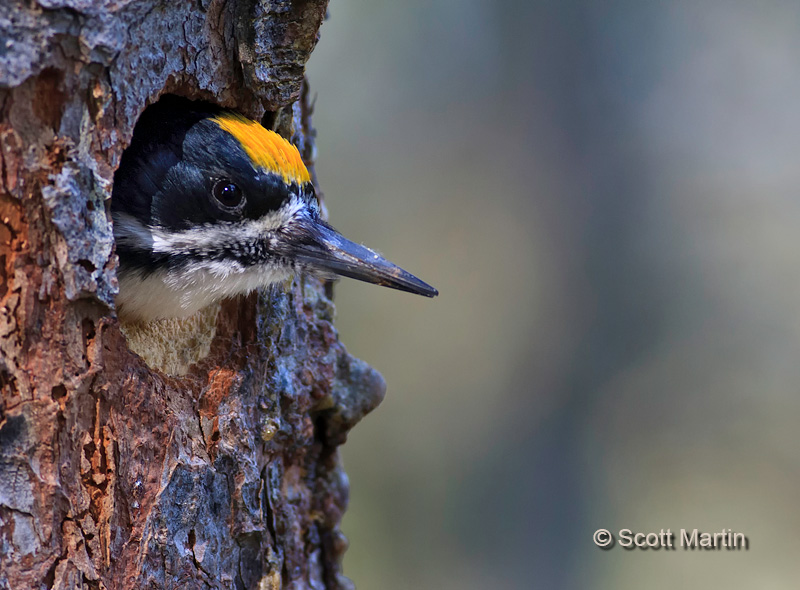
.
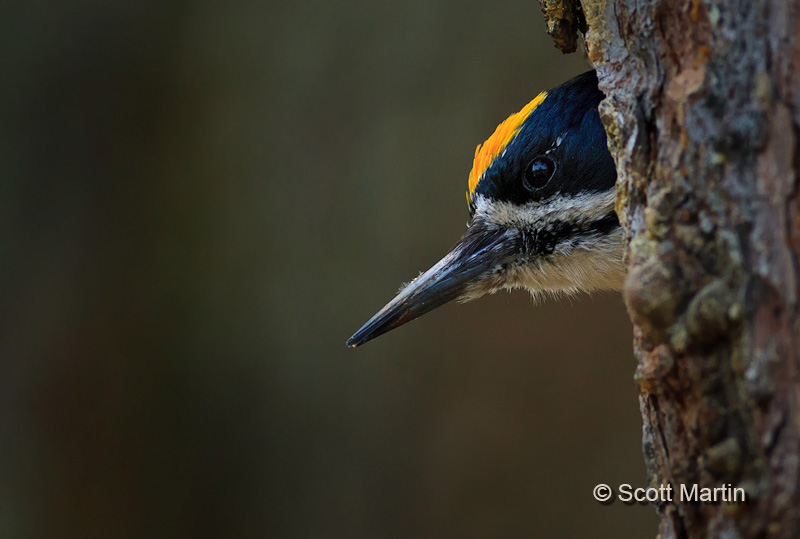
The above two ‘peekaboo’ shots are of the male, who is identified by the yellow/orange crown, while the female crown is black. The above two pictures, although compositionally similar, are taken from opposite sides of the tree resulting in differing back grounds and completely different lighting (front lighting in the first and back lighting in the second). Over all my preference is for the second shot, but by way of practice, when given the opportunity always photograph the subject from as many different angles and lighting configurations as possible. You will often be surprised by the results, even when breaking the unwritten rules of photography!
Black-backed Woodpeckers are a medium-sized woodpecker averaging about ten inches long with a wing span of seventeen inches. As their name suggests they have entirely black backs with a white chest and barred flanks. Their beaks are relatively long and they have a prominent white cheek mark. Another interesting fact regarding this bird is that they have only three toes.
The following images are of the female Black-backed Woodpecker.
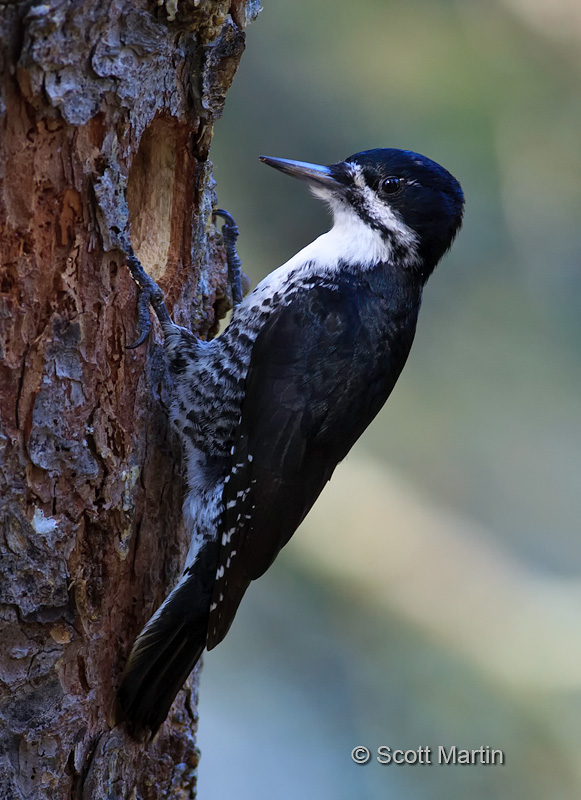
.
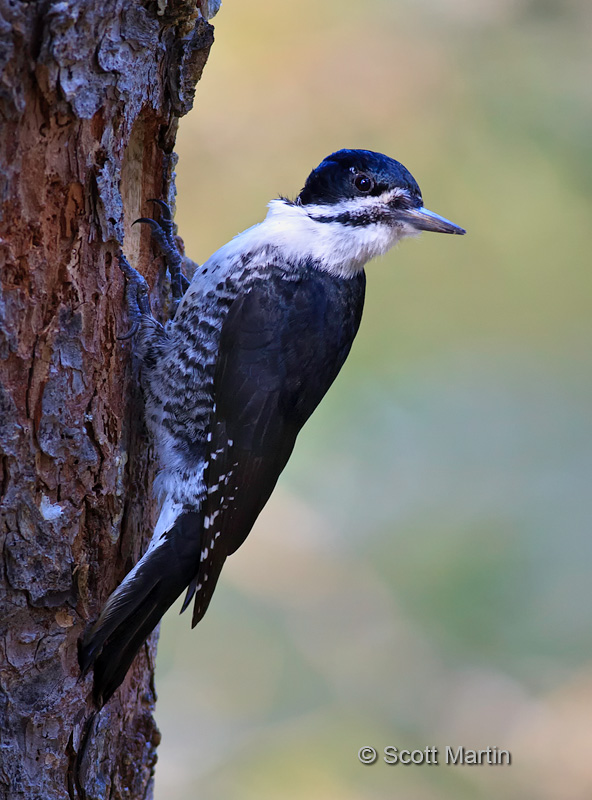
.
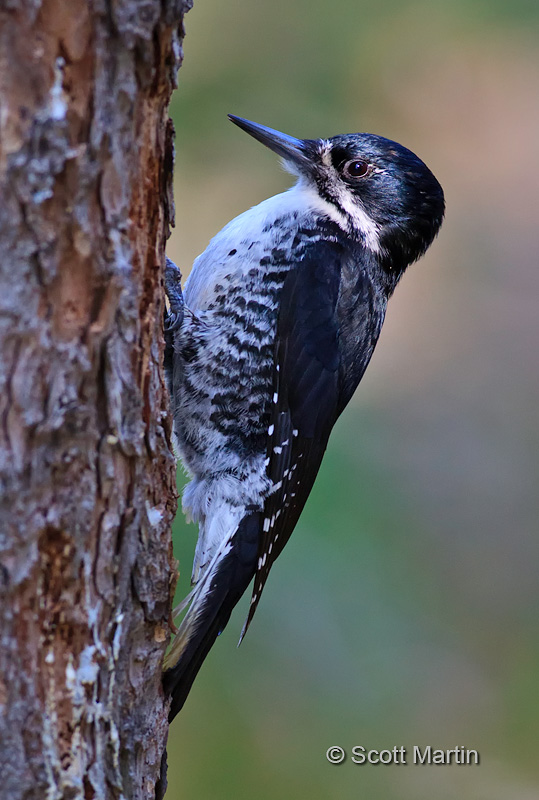
.
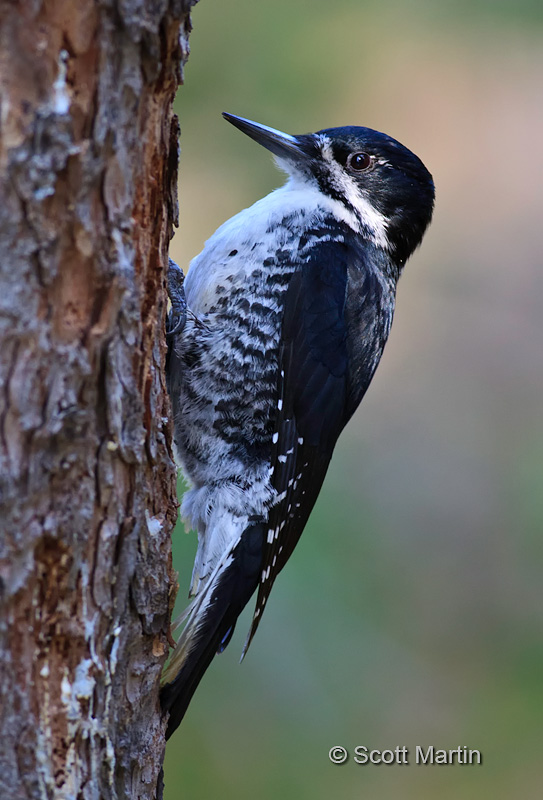
.
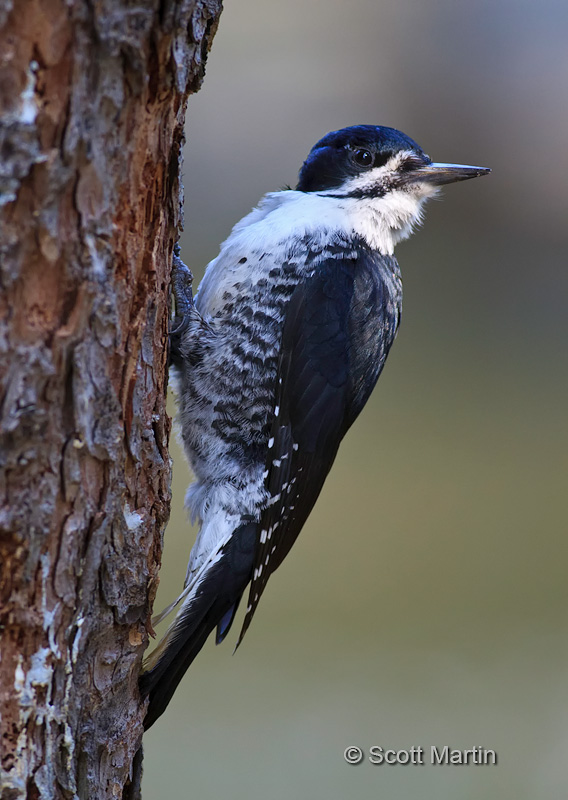
Black-backed Woodpeckers carve out a new nest every year in April or May, generally in a dead tree or a burnt tree. Although they typically live in the coniferous trees of boreal forests, they are known for preferring areas recently damaged by forest fires. The nests are generally located fairly low to the ground. The female lays three or four eggs which are incubated by both parents for 12-14 days. Interestingly the male alone incubates the eggs during the night. Once born, both adults feed the chicks which fledge after about twenty-four days.
As already mentioned, Black-backed Woodpeckers only have three toes and it was harder than expected to get a good shot demonstrating that. This next shot shows the bird sticking his foot out seemingly just to show off his three toes for the camera!
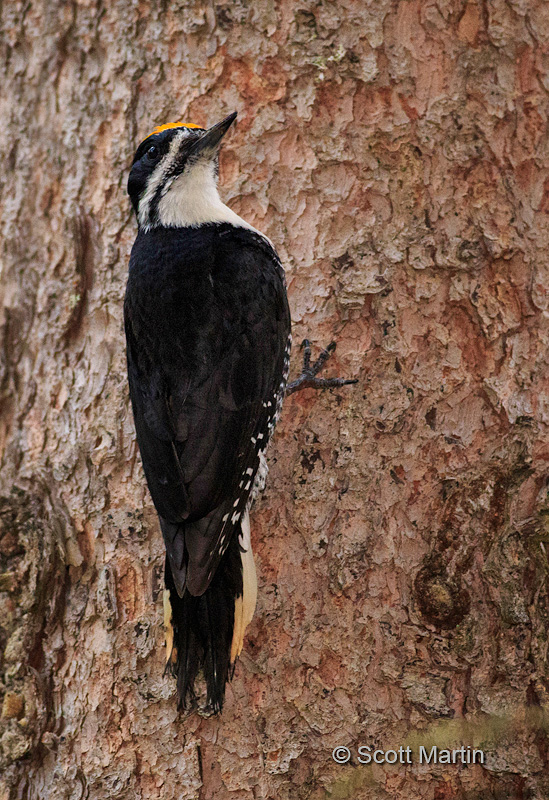
The next images are of the male.
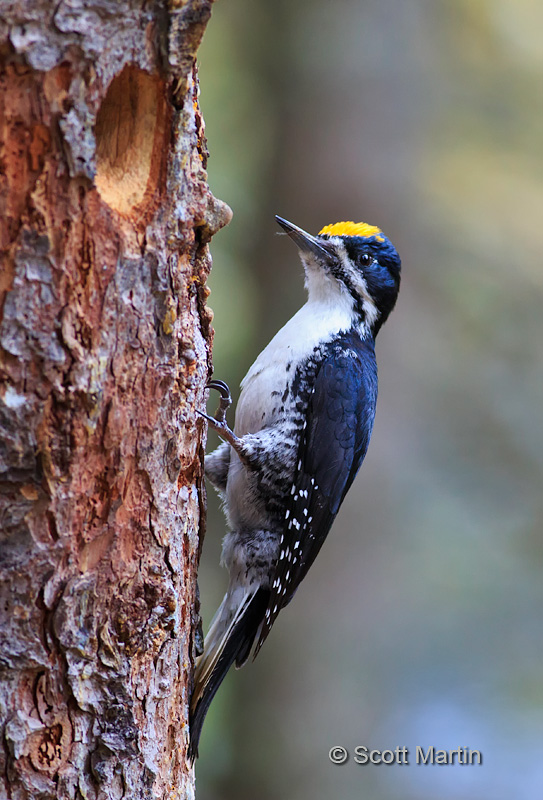
.
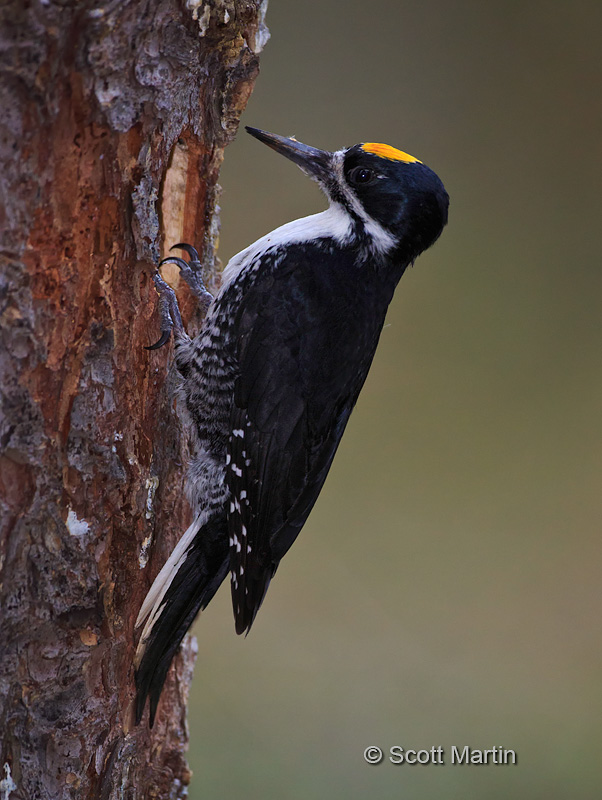
.
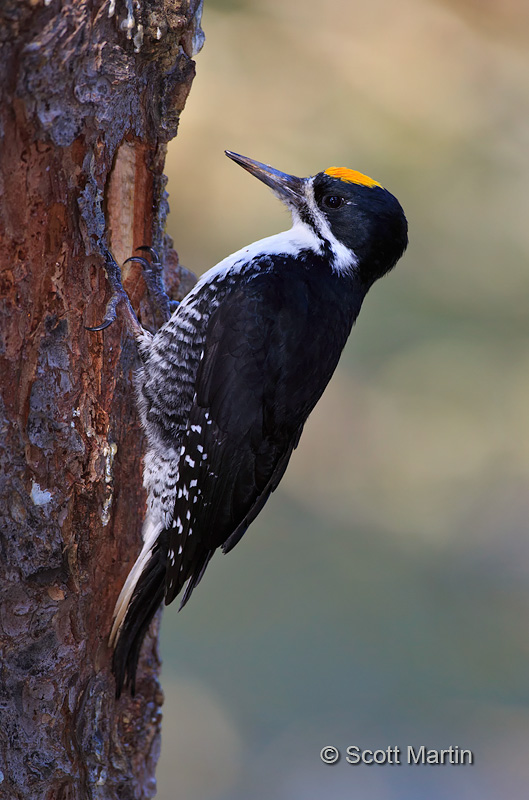
.
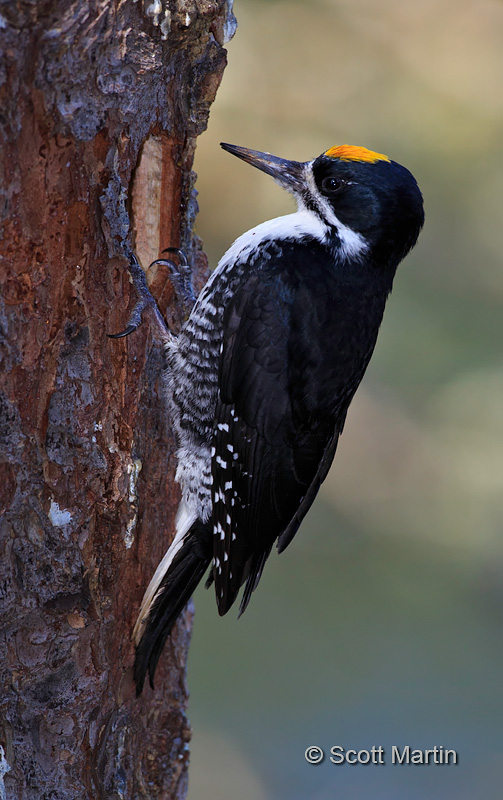
More woodpeckers can be viewed in the Woodpecker Gallery.
The images in this post were taken using both 1D Mk III and 5D Mk III bodies and 400/5.6 and 500/4 lenses in various lens body combinations. It was a very dark gloomy day, with the exception of about twenty minutes of sunlight over the time we were at the nest site. This resulted in higher ISO’s than usual, with some of the images in this series taken at ISO 4000. Fortunately the newer cameras function extremely well at ISO’s that were unusable with the technology available just a few years ago.
As mentioned above, we found the Black-backed Woodpeckers while in the park looking for moose. Here is one of them taken with the 5D and 70-200/2.8.
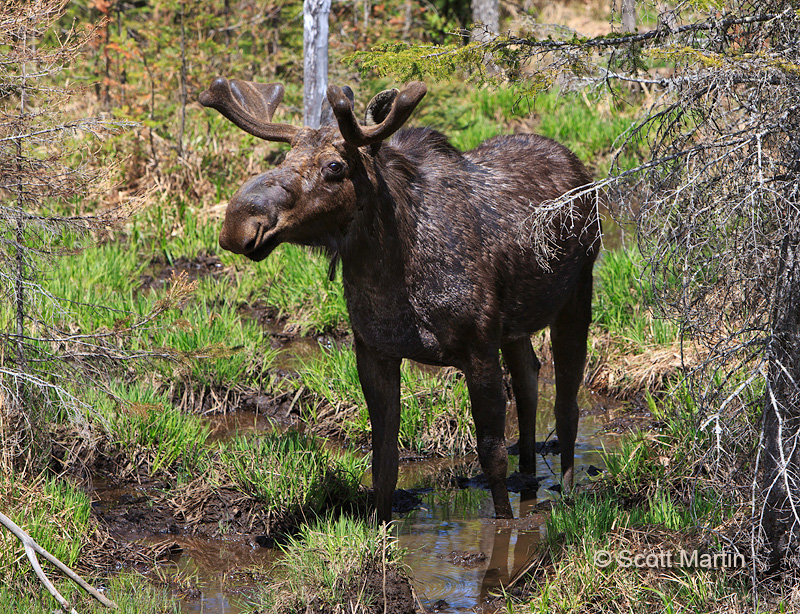


Excellent series Scott! Your drought with one of your nemesis birds has come to an end in glorious fashion. I also see you are getting a jump on me getting that Moose image too, I suppose it is just practice for our trip in a couple of weeks!
Thanks Arni and its always a pleasure to cross another one off the list! We saw six moose that day but I didn’t take many shots as I’m waiting for our expedition in June!
Scott, these are fabulous photo’s of a gorgeous bird. What amazes me as I look at these is the perfect hole they bore out to nest in. Have you ever seen them working the hole? Would be fabulous to see this taking place. How friendly are the Moose? Looks a bit wary of you. Another great series showing God’s creation. Well done my friend!
Thanks Rob. We didn’t get to see these birds work on the nest, however they do use the wood chips created to form the floor of the nest, for padding and warmth. Moose are huge, but vegetarians, however I wouldn’t describe them as friendly! They are big enough that they certainly are not afraid of people.